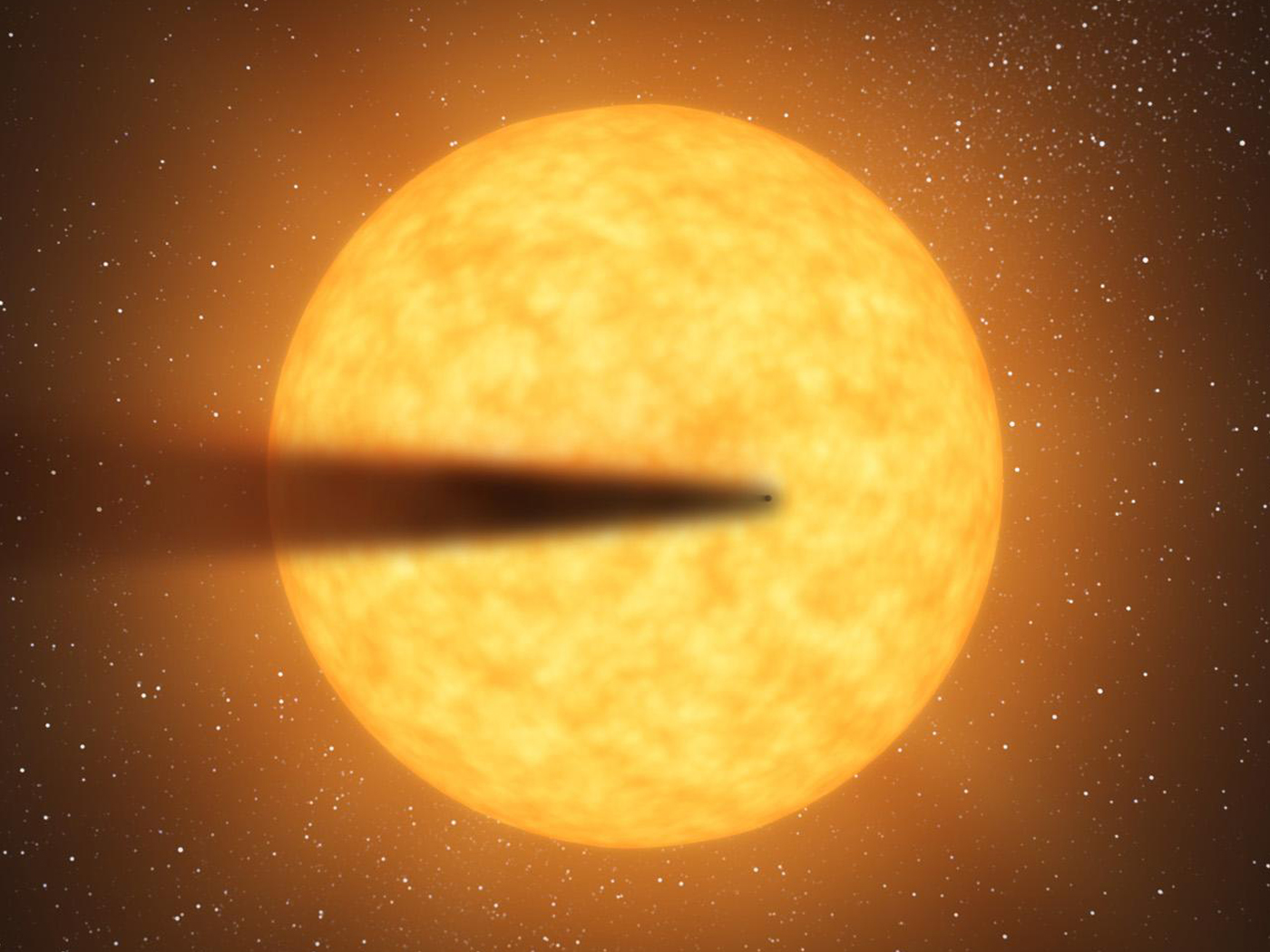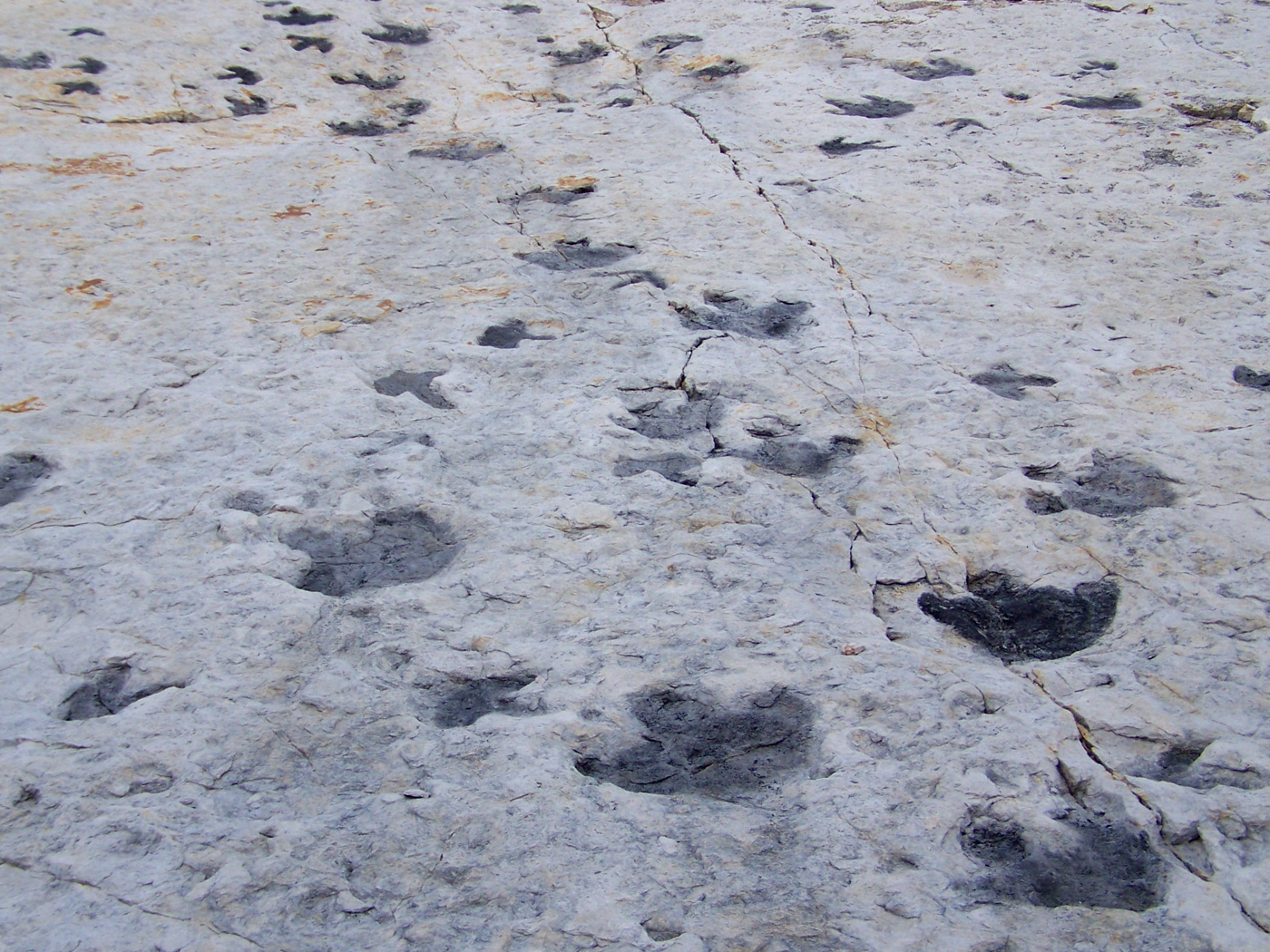From where did the earth come? By what process was it constructed? Did an ever-seeing Intelligence plan and direct the creation of our planet? Or, did the earth evolve by unguided chance processes without an overseeing plan? A person's answers to the above questions will significantly affect his personal viewpoint regarding the origin, purpose, and destiny of both the earth and man.
Since scientists agree that the earth has not existed eternally, simple logic dictates that no middle position exists on the important issue of plan versus accident. Either a superintending Mind planned and designed our planet, or it all originated by a fortuitous accident without a plan and design! To help resolve the matter let us consider some amazing facts about the earth.
EARTH'S SURFACE TEMPERATURE
The average temperature at the earth's surface depends upon several factors, the two most important being the distance of the earth from the sun and the tilt of the rotational axis of the earth. Of secondary importance to the earth's surface temperature is the area of the continents, the amount of earth covered by light- and heat-reflecting masses of ice (glaciers), and the amount of carbon dioxide and water vapor affecting the transparency of the atmosphere to both incoming and outgoing heat.
The most important factor affecting the surface temperature of the earth is obviously the distance from the sun. If the earth were moved a few million miles closer to the sun, the surface of the earth would become warmer causing our glaciers to melt. With a decrease in the area of ice the total reflectivity of our planet's surface would thereby decrease and more of the sun's heat would be absorbed. The melting of glaciers would produce a rise of sea level, and, apart from flooding most of our modern cities, would create a larger total ocean surface area. Since seawater absorbs larger amounts of solar radiation than equal area land masses, heating of the earth would again be promoted. Furthermore, after increasing the temperature of the oceans, much of the ocean's dissolved carbon dioxide would be added to the atmosphere along with large amounts of water due to increased evaporation. The increased carbon dioxide and water vapor level of the atmosphere would again bring about a significant temperature rise. All things considered, a minor decrease in the sun's distance would have a drastic heating effect on the earth's surface.
What would happen if the earth were a few million miles farther from the sun? The reverse of the previous situation applies. We would have more of our planet covered by ice, with associated increased reflectivity of the sun's heat. The ocean would cover less of the earth's surface and the important process of absorption of heat by seawater would be decreased. Since the ocean would be colder, evaporation would be less with less heat-trapping water vapor in the atmosphere. Much of the carbon dioxide from the atmosphere would become dissolved in the colder ocean. Calculations show that a decrease of carbon dioxide in the air to just one-half of its present level would lower the average temperature of the earth's surface by about 7.0 degrees Fahrenheit! Thus, increasing the sun's distance would have a profound cooling effect on our planet.
From this discussion we see that the earth is just the proper distance from the sun to maintain the right surface temperature suitable for life and the many important geologic processes! To the evolutionist the distance of the earth from the sun is a strange accident, but to the creationist it is a marvelous testimony of God's planning.
EARTH'S TILT AND ROTATION
The earth's axis of rotation is tilted 231/2 degrees relative to the perpendicular of the earth's plane of orbit. This tilt causes the four seasons. During the months of May, June, and July the northern hemisphere is pointed toward the sun, causing the hemisphere to warm and bringing on the season called summer. During November, December, and January the northern hemisphere is pointed away from the sun providing colder temperatures and the season called winter. Why is this tilt 231/2 degrees? Why not some other value?
What if the earth had no tilt, and the axis of rotation remained perpendicular to the plane of orbit? We would have no seasons and the surface temperature at any point on the earth would be the same during both July and January. The equatorial region of our planet would be intolerably hot all year and the poles would remain fairly cold. Ice would accumulate at the poles. The weather patterns would be stationary with permanently positioned warm and cold air masses. Some areas would continually be very humid while other areas would be quite arid. Only the mid-latitudes would be comfortable for human habitation and suitable for cultivation. Only about one half of our presently farmable lands could grow crops.
What would be the effect if the earth had double the present tilt? Temperature extremes between seasons would be much more pronounced. Even the mid-latitudes would have unbearable heat in the summer and frigid cold in the winter. Most of Europe and North America would experience very prolonged darkness in the winter and very prolonged daylight in the summer. Life on most of the earth's surface would become intolerable.
The earth rotates once every 24 hours producing the interval of time called "day". If the earth rotated more slowly, we would have more extreme day and night temperatures. Other planets have "days" which are many times that of the earth, producing scorching daytime heat followed by freezing nighttime cold. The normal daily routine of plants and animals would be impossible if the earth day were much shorter than that of the present. The 24-hour day seems to be optimum, serving to evenly heat the earth (somewhat like a turkey turning on a barbecue spit).
Thus, we could hardly improve on the present arrangement of tilt and rotation, which seems to be planned for both comfort and economy. Our present tilt causes seasons with associated fluctuations in weather, producing a maximum amount of farmable land and pleasant seasons. The present rotation of the earth helps to uniformly heat its surface and cause winds and ocean currents.
EARTH'S ATMOSPHERE
The earth's atmosphere is composed of four important gases. The most abundant gas is nitrogen (N2) which comprises about 78% of the atmosphere. Oxygen gas (O2) is the second most common ingredient, being present at 21%. Argon gas (Ar) is third at slightly less than 1%. Fourth is carbon dioxide gas (CO2), present at 0.03%.
In our study of the atmosphere we see that its gases can be divided into two main categories ¾ inert gases and reactive gases. Argon is inert and nitrogen is relatively inactive. These enter into very few chemical reactions. It is indeed fortunate that nitrogen gas does not readily combine with oxygen, otherwise, we could have an ocean full of nitric acid!
Oxygen gas is the most common reactive gas in our atmosphere. The presence of abundant oxygen is the feature which most distinguishes our atmosphere, for oxygen in more than trace amounts has not been discovered in the atmosphere of any other planet.
Unlike nitrogen gas, oxygen gas readily enters into reactions with other gases, with organic compounds, and with rocks. The present level of oxygen seems to be optimum. If we had more oxygen, combustion would occur more energetically, rocks and metals would weather faster, and life would be adversely affected. If oxygen were less abundant, respiration would be more difficult and we would have a decreased quantity of ozone gas (O3) in the upper atmosphere which shields the earth's surface from deadly ultraviolet rays.
Carbon dioxide is also a reactive gas which forms an essential part of our atmosphere. Carbon dioxide is required by plants, serves to effectively trap the sun's radiation, and mixes with water to form an acid which dissolves rocks adding an important substance called bicarbonate to the ocean. Without a continuing supply of carbon from the atmosphere, life would be impossible.
Important as carbon dioxide is to the present earth and life, it comprises only a mere 0.03% of our atmosphere! This small amount, however, seems to be at the optimum value. If we had less carbon dioxide, the total mass of terrestrial and marine plants would decrease, providing less food for animals, the ocean would contain less bicarbonate, becoming more acidic, and the climate would become colder due to the increased transparency of the atmosphere to heat. While an increase in atmospheric carbon dioxide would cause plants to flourish (a beneficial circumstance for the farmer), there would be some unfortunate side effects. A fivefold increase in carbon dioxide pressure (the optimum level for organic productivity) would alone cause the average world surface temperature to be a few tens of degrees Fahrenheit warmer! Also, a large increase in carbon dioxide would so accelerate the chemical weathering of the continents that an excess of bicarbonate would form in the ocean, leading to an alkali condition unfavorable for life.
The total density or pressure of our atmosphere appears to be ideal. The density is very important for it acts as an insulating blanket protecting the earth from the coldness of space. If the earth had a greater diameter, holding a more dense atmosphere, the thermal blanketing effect would be enhanced, producing a much warmer climate. If the earth were of smaller diameter, holding a less dense atmosphere, there would be a colder climate. As suggested earlier, the earth has the correct surface temperature, showing that the atmosphere has the proper density and that the earth has the proper size!
The atmosphere also serves to filter out ultraviolet light and cosmic rays. Both are harmful to life and would be much more common at the earth's surface if the atmosphere were less dense. The atmosphere also burns up meteors. Long range radio communication is possible because the atmosphere is the correct density to reflect some radio frequencies. Furthermore, the atmosphere reflects unwanted stellar noise which could interfere with radio.
This analysis shows that our atmosphere has both the correct composition and density. How, except by divine planning and design, could our atmosphere have formed?
WORLD OCEAN
Water is an extremely rare compound in space. A permanent reserve of liquid water, a very unlikely occurrence in space, is known to exist only on the earth. Our planet possesses an abundant supply estimated at some 340 million cubic miles of liquid water.
Water in liquid form has many unique chemical and physical properties which make it ideal as the primary component of life and the solution of the world ocean. The solvent characteristic of water, for example, makes it possible for all essential nutrients needed by life to be dissolved and assimilated. The fact that water is transparent to visible light makes it possible for marine algae to perform photosynthesis below the ocean surface and for ocean animals to be able to see through water. Water is one of only a few substances which expands when it freezes, preventing our ocean and lakes from freezing from the bottom upward.
One of the most remarkable properties of water is its high heat-capturing and heat-holding capacity. The ocean is less reflective than the land to incoming solar radiation and thereby absorbs more of the sun's energy than equal areas of land. It also takes much more heat to raise the temperature of a unit mass of seawater one degree than it does for an equal mass of the continents. Since the average temperature of the ocean is about 45 degrees Fahrenheit, the ocean will cool the hotter equatorial land portions of our planet and warm the colder polar regions. Furthermore, ocean currents caused by the earth's rotation serve to circulate seawater and prevent the equatorial seas from becoming too hot and the polar seas from becoming too cold and freezing completely.
The world ocean serves as a reservoir for some very important chemicals besides water. Most of our planet's carbon dioxide is dissolved in seawater, being in equilibrium with the atmosphere. The recent addition of large amounts of carbon dioxide to the atmosphere by burning of fossil fuels has not significantly raised the amount of that gas in the atmosphere. Most of the combustion-derived carbon dioxide has been absorbed by the ocean.
From our discussion it should be evident that the presence of an ocean on our planet is an evidence of God's planning and foresight. No other planet is known to have a permanent supply of liquid water. The chemical and physical properties of liquid water are necessary for life to survive. The world ocean regulates the earth's temperature and serves as a reservoir for many important chemicals.
EARTH'S CRUST
The continents which cover 29% of our planet's surface have a mean elevation of about 2,750 feet above sea level. The world ocean which covers 71% of the earth's surface has an average depth of some 12,500 feet! Why do we have such lofty continents along with such deep ocean basins? We would expect, using simple probability estimates, to have an earth of nearly constant elevation.
If we were to scrape off the continents and place them in the deeper parts of the ocean to make an earth of common elevation, we would have an earth covered with approximately 8,000 feet of water! No land areas would be exposed and terrestrial life could not exist. There would be no shallow coastal seas providing ecological zones in which most marine creatures could thrive. The ocean with a constant elevation earth would be nearly void of life.
There are two main reasons why the continents remain elevated above the sea floor. First, the continents are made up of rocks which, as a whole, are less dense than the rocks of the ocean bottom. Second, the continental crust is usually over twice as thick as the oceanic crust. The difference in density and thickness between continental and oceanic crust is just the right amount to maintain the present "freeboard" of the continents above the ocean bottom! To the evolutionist this is a peculiar accident. To the creationist, however, these facts show God's design.
Study of meteorites has revealed that the elements iron and oxygen are about equal in abundance on the average. From what is known about the density and structure of the earth, geologists suggest that iron is the commonest element in the bulk earth, being slightly more abundant than oxygen. However, when the crust of the earth is considered, geologists estimate that oxygen is about eight times more abundant than iron! Furthermore, the earth's crust has unusually large amounts of silicon and aluminum.
If we had larger amounts of iron and magnesium in the crust, oxygen from the atmosphere would be consumed to weather these elements and an oxygen-rich atmosphere would be impossible. Our present crust, unlike other planets and meteorites, is already highly oxidized and therefore permits an oxidizing atmosphere. Thus, the composition of the crust shows God’s wisdom.
CONCLUSION
Two different conclusions can be drawn from the data which have been presented. The data indicate either that an omniscient Mind planned and designed our amazing planet, or that it originated by a fortuitous accident without plan or design. There is no middle ground! One must decide either God or chance!
The person who is a consistent evolutionist will attribute the many wonders of our planet (the earth's surface temperature, tilt and rotation, atmosphere, ocean, and crust) to the unguided chance. This conclusion, though not impossible, takes a great deal of faith in extremely improbable events. It is akin to supposing that the Mona Lisa came into existence from globs of paint hurled at a canvas.
The creationist, on the other hand, will recognize that the only rational deduction from the data is that the marvels of the earth owe their origin to the intelligence and handiwork of God. It was the psalmist who said:
"In His hand are the deep places of the earth; the strength of the hills is His also. The sea is His, and He made it, and His hands formed the dry land. Oh, come, let us worship and bow down; let us kneel before the Lord our maker" Psalm 95:4-6.
* Stuart E. Nevins has B.S. and M.S. degrees in geology, and at time of publication was Assistant Professor of Geology at Christian Heritage College.
Cite this article: Nevins, S. 1974. Planet Earth: Plan or Accident? Acts & Facts. 3 (5).













